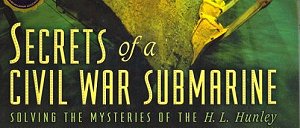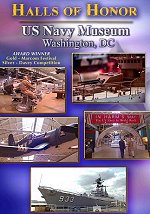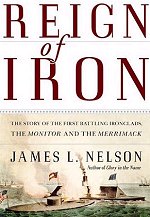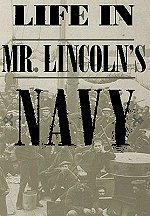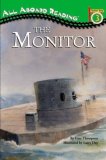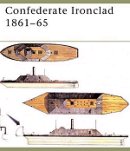The Confederate States of America used submarines in combat. They built small, steam-powered submarines, called Davids, named for the Bible's legendary giant-slayer. On Oct. 5, 1863, one of these attacked the USS New Ironsides off the coast of Charleston, South Carolina, disabling but not sinking the ship with a 65-pound spar torpedo. The Civil War also saw the first submarine to |
In 1861, French inventor Brutus De Villeroi convinced the Union Navy that he could build a submersible warship. In 1863, after the Alligator's oar system was replaced with a screw propellor, the submarine was sent to help capture Charleston, South Carolina. While being towed south for the battle, the Alligator had to be cut loose during a storm off Cape Hatteras, North Carolina. Her current whereabouts are unknown, but an effort (launched in 2003) by the Office of Naval Research and NOAA could one day reveal the Secrets of the Alligator.
I magine living in Philadelphia during the early days of the Civil War and reading the latest issue of the Philadelphia Evening Bulletin. A front page story reveals a strange and alarming tale: Harbor police have captured a partially-submerged, 33-foot long, cigar-shaped contraption moving slowly down the Delaware River. |
 The Story of the H.L. Hunley During the Civil War, Union forces blockade the port of Charleston so the Confederate army seeks a way to attrack the Yankee Ships. George Dixon is part of the group of men given the task of creating and building the "fish boat," a submarine. The H.L. Hunley ultimately sets out on its mission to sink Yankee ships, but fails to return, its whereabouts unknown. |
 Horace Hunley Stands by His "David" of the Confederate Navy 12 in. x 9 in. Buy at AllPosters.com |

Raising the Hunley: The Remarkable History and Recovery of the Lost Confederate Submarine
For more than a century the fate of the Hunley remained one of the great unsolved mysteries of the Civil War. Then, on August 8, 2000, with thousands of spectators crowding Charleston Harbor, the Hunley was raised from the bottom of the sea and towed ashore.

Duel on the Roanoke - The True Story of the CSS Albemarle
A 158-foot Confederate ironclad ship built in a cornfield 90 miles up North Carolina's Roanoke River, under the direction of an 18-year-old boy, and the deadly cat-and-mouse game between the two opposing captains.

Ironclad of the Roanoke
Gilbert Elliott's Albemarle
The story of a Confederate Ironcald that was a powerful force until sunk by a Union Torpedo Boat after its brief stormy life. Ironic in the fact it was built in a Cornfield. Confederate Ingenunity at it finest!
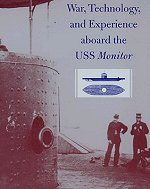
War, Technology, and Experience aboard the USS Monitor
The experience of the men aboard the Monitor and their reactions to the thrills and dangers that accompanied the new machine. The invention surrounded men with iron and threatened their heroism, their self-image as warriors, even their lives
 successfully sink its target, the 40-foot-long Hunley , which was operated by eight men turning a hand crank attached to her propeller shaft. The Hunley sank and was recovered three times during trial runs before it was successful. On Feb. 16, 1864, under the cover of darkness, the Hunley sank the
successfully sink its target, the 40-foot-long Hunley , which was operated by eight men turning a hand crank attached to her propeller shaft. The Hunley sank and was recovered three times during trial runs before it was successful. On Feb. 16, 1864, under the cover of darkness, the Hunley sank the 
 Launched in 1862 during the Civil War, Alligator was an engineering marvel that helped usher in a new era in undersea travel. But until recently, little was known about the green, 47-foot-long Union vessel. The Alligator was lost off the North Carolina coast during a storm in 1863. It was never seen again.
Launched in 1862 during the Civil War, Alligator was an engineering marvel that helped usher in a new era in undersea travel. But until recently, little was known about the green, 47-foot-long Union vessel. The Alligator was lost off the North Carolina coast during a storm in 1863. It was never seen again.  erate ironclad, the Virginia. Although the Navy specified that the submarine's construction take no more than 40 days at a cost of $14,000, the project suffered long delays. As project supervisor, DeVilleroi delayed completion by making changes during the process of advancing the initial design to an operational Naval vessel. As a result of serious liaison problems with the Navy, the contractor and himself, he effectively exited from the process and was later officially dismissed.
erate ironclad, the Virginia. Although the Navy specified that the submarine's construction take no more than 40 days at a cost of $14,000, the project suffered long delays. As project supervisor, DeVilleroi delayed completion by making changes during the process of advancing the initial design to an operational Naval vessel. As a result of serious liaison problems with the Navy, the contractor and himself, he effectively exited from the process and was later officially dismissed. 